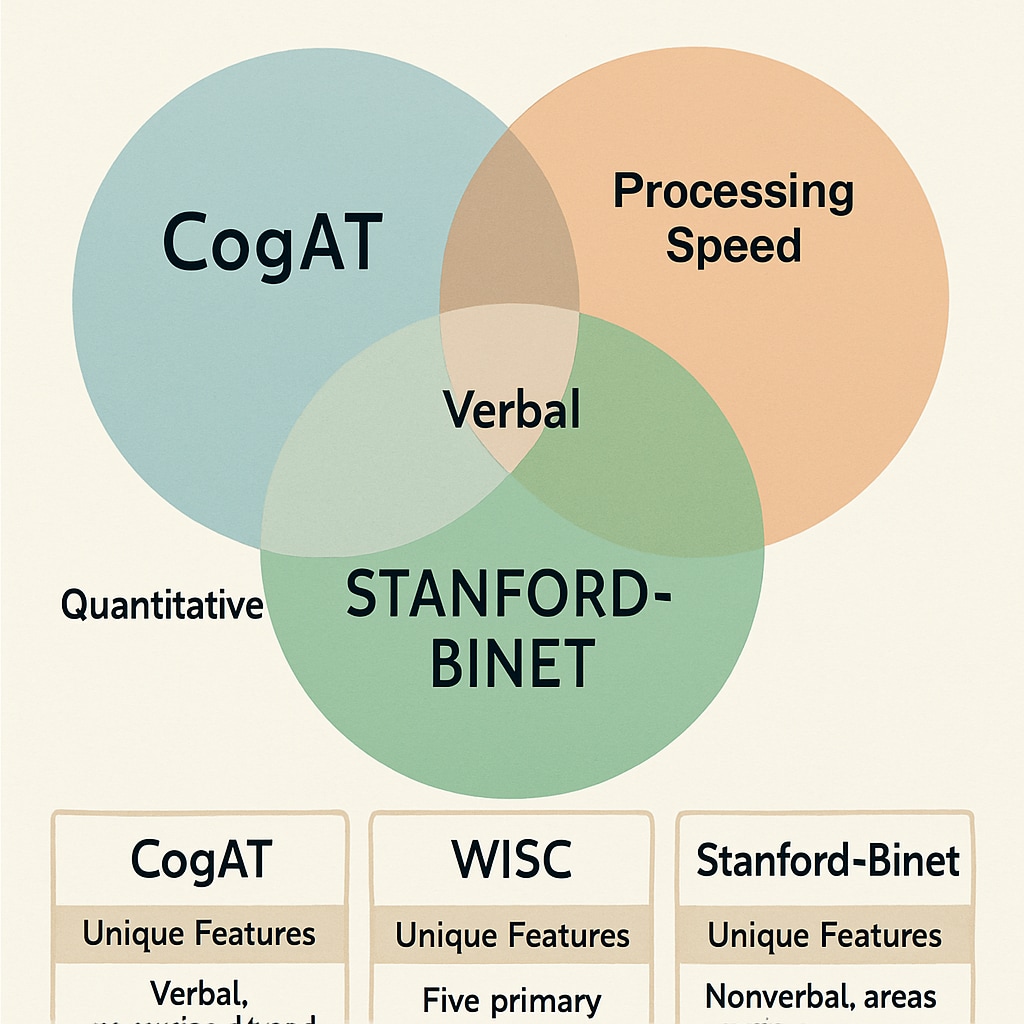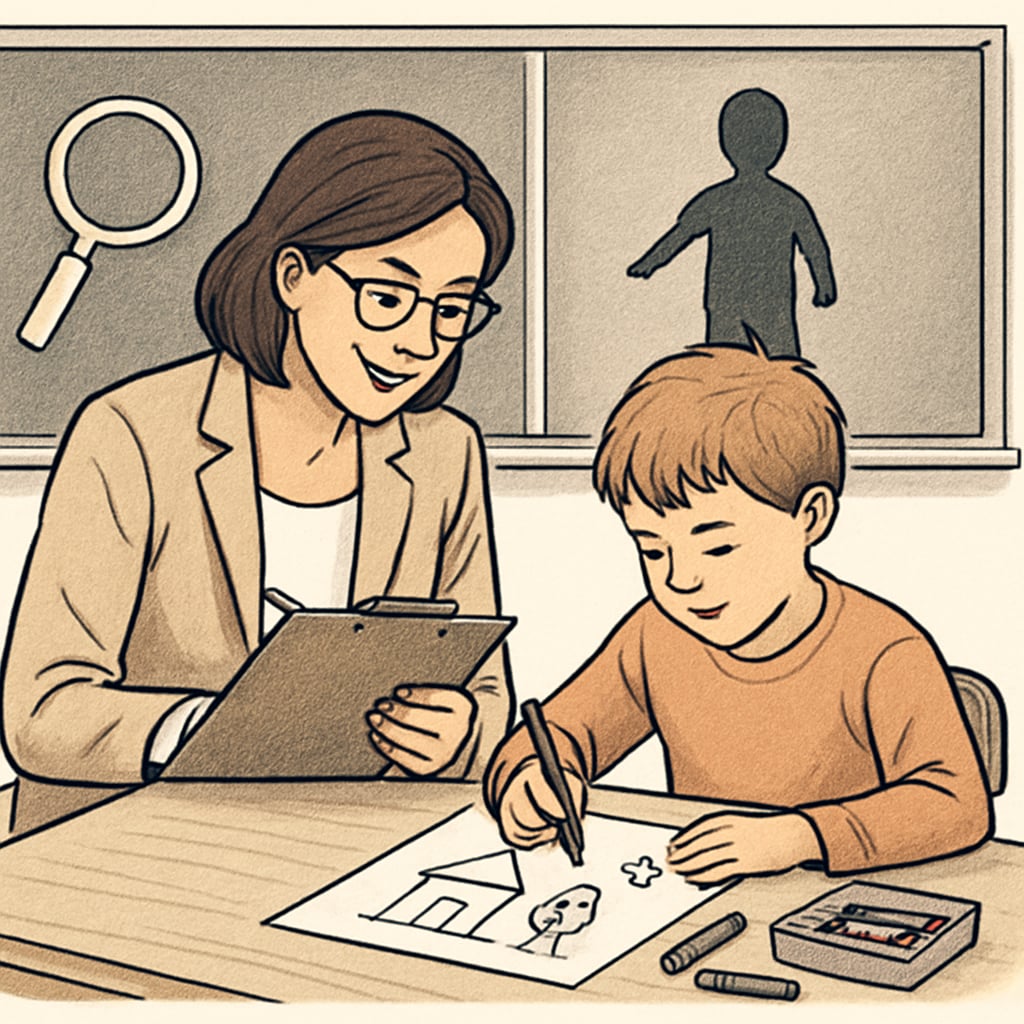Identifying and nurturing gifted children is a vital step in helping them reach their full potential. Tools such as CogAT, WISC, and Stanford-Binet are commonly used for intelligence testing, forming a foundation for evaluating gifted children. However, no single test is capable of assessing a child’s complete range of talents and abilities. This article delves into the strengths and limitations of these tools while proposing a comprehensive, multidimensional approach to assessment.
Popular Tools for Evaluating Gifted Children
Several standardized tests are widely used to assess intelligence and giftedness in children. Below, we explore three primary tools:
- CogAT (Cognitive Abilities Test): This test evaluates reasoning and problem-solving skills across verbal, quantitative, and nonverbal domains. It is particularly useful for identifying students with high potential in specific areas, but it may not fully capture creative or emotional intelligence.
- WISC (Wechsler Intelligence Scale for Children): WISC is a popular choice for measuring general intelligence. It provides a detailed profile of cognitive strengths and weaknesses, but its reliance on structured tasks can sometimes overlook unconventional talents.
- Stanford-Binet Intelligence Scale: Known for its long history, this test offers insights into a child’s IQ. While highly reliable, its emphasis on numerical scores can oversimplify the complex nature of intelligence.

Limitations of Standardized Testing
While standardized tests provide valuable data, they come with inherent limitations. For example, these tests often focus on measurable intelligence (IQ) and may overlook other critical aspects of giftedness, such as creativity, leadership, and emotional intelligence. They may also be biased against children from diverse cultural or linguistic backgrounds, as test content often reflects the cultural norms of the majority population.
Moreover, standardized tests typically assess performance in controlled environments, which may not align with how a child applies their abilities in real-world scenarios. As a result, relying solely on such tools can lead to an incomplete evaluation of a child’s potential.
A Multidimensional Approach to Gifted Assessment
To address the limitations of standardized tests, experts recommend a multidimensional assessment approach. This method combines various tools and strategies to capture a comprehensive picture of a child’s abilities. Key components include:
- Observation Assessments: Teachers and parents can observe a child’s behavior, creativity, and problem-solving skills in natural settings. This provides context that standardized tests might miss.
- Performance-Based Evaluations: These involve tasks or projects that allow children to showcase their skills in practical ways. For instance, a child might create an invention or solve a real-world problem.
- Portfolio Reviews: A collection of a child’s work, such as essays, artwork, or scientific experiments, can reveal patterns of giftedness over time.

By integrating these methods with traditional tests like CogAT, WISC, and Stanford-Binet, educators and parents can develop a richer understanding of a child’s unique talents and needs.
Creating Personalized Development Paths
Once a child’s gifts are identified, the next step is creating a tailored development plan. Such plans should focus on nurturing strengths while addressing any areas that need growth. For example, a child with exceptional mathematical abilities but weaker social skills might benefit from advanced math courses alongside group activities to build teamwork skills.
Collaboration between educators, parents, and psychologists is critical to ensuring that these plans are both effective and adaptable. Education systems should also prioritize flexibility, allowing children to explore their interests and excel at their own pace.
Conclusion
Evaluating gifted children requires more than just numerical scores. While tools like CogAT, WISC, and Stanford-Binet provide valuable insights, they must be part of a broader, multidimensional approach. By combining standardized tests with observation, performance-based evaluations, and portfolio reviews, we can ensure a holistic understanding of each child’s unique potential. Ultimately, this enables us to provide personalized development paths that empower gifted children to thrive in their own extraordinary ways.
Key Takeaway: A balanced approach to assessment not only identifies giftedness but also ensures that every child receives the support and opportunities they need to flourish.


